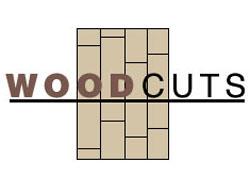Wood Cuts - December 2008
By Rick Berg
An amendment to the federal Lacey Act, which is scheduled to go into effect next April, will require importers of wood flooring, as well as furniture and other wood products, to file paperwork declaring the wood’s origin and certifying that the wood was not illegally logged. That will likely create some short-term administrative headaches. Nonetheless, says Rick Holden, vice chair of the National Wood Flooring Association and executive vice president of Derr Flooring in Willow Grove, Pennsylvania, it’s a positive step for wood flooring in the U.S.
“Probably for a short period of time, it’s going to be difficult because the government hasn’t given importers all the information necessary in terms of how they’re supposed to report the information, but once that is clarified, it should be fine,” says Holden. “The companies I’ve talked to say they’re ready to move forward with it.”
Technically, the new Lacey Act requirements won’t go into effect until April, though the U.S. Department of Agriculture says the requirements are in force on December 15 on a voluntary basis and notes that “truthfulness is immediately enforceable.”
The amendment, which was created to combat illegal logging in other countries, makes it illegal to “import, export, transport, sell, receive, acquire or purchase in interstate or foreign commerce” wood or other plants “obtained in violation of any domestic or international laws.” The amendment was enacted into law on May 22 under the Lacey Act, which became law in 1900. The original act was designed to prohibit shipments of animals and plants, in particular, ivory, which had been illegally obtained.
Holden says the industry is fully behind the new regulation, because responsible and sustainable use of the world’s forest resource is a foundation of the wood flooring industry’s focus on environmental responsibility. Anderson Hardwood President Don Finkell agrees.
“The (International Trade Commission) estimated that over half of the hardwood sold in America is imported, and the same report estimated that at least 18% of that is from illegal sources,” Finkell says. So, about 10% of all wood flooring in this country could have been manufactured from illegally logged wood.
Finkell notes that violators can be prosecuted either criminally or civilly, and willful violation could carry a $500,000 fine and five years in jail. Even negligence could result in a $100,000 fine and one year in jail. He says that while the government will have agents in the field, most prosecutions are likely to result from tips from sources like disgruntled former employees and even environmental activists who monitor overseas firms and are interested in embarrassing a large company.
Overall, Finkell believes the changes should benefit more than domestic manufacturers, because much of the wood coming into this country is sold directly to consumers, completely bypassing wholesale distributors and retailers.
There are other efforts underway as well. The National Wood Flooring Association recently partnered with Scientific Certification Systems, the Forest Stewardship Council, and the FSC Family Forests Alliance to develop the association’s Responsible Procurement Program (RPP), which is designed to promote environmentally and socially responsible forest management in the regions that supply the world’s timber—and in particular the supply of wood flooring in the U.S.
RPP offers tiers that allow participants to move toward higher levels of environmental responsibility.
Holden says the industry as a whole looks at the new Lacey Act regulations as a positive step that will reinforce the notion that wood flooring is an environmentally friendly product. His company, Derr Floors, is one of the leading distributors on the East Coast, and deals with most of the major wood flooring manufacturers in the U.S.
“Most of the companies I deal with are of the opinion that this is a good thing,” says Holden. “We all know that we need to have wood that’s harvested responsibly if we’re going to be able to maintain our status as an environmentally responsible product. That just makes good business sense. It also keeps everyone on an even playing field in terms of sourcing our products, as opposed to some companies trying to take advantage of less expensive, illegally harvested wood.”
Holden says the RPP is intended to address both those issues, as well as make it easier for companies to meet the needs of consumers, builders, architects and other specifiers who increasingly demand green building products.
Many companies have already obtained FSC certification or taken other steps to verify the sustainability of their sourced wood products, but Holden says the RPP will give others the option of pursuing certification in a more streamlined fashion, in partnership with internationally recognized third-party organizations.
“It’s all part of the green story we’ve been able to tell, and we need to be able to continue to tell that story in a convincing way,” says Holden. “More emphasis is being placed on LEED certified building, and wood flooring should be a part of that.”
The reality is that in a LEED oriented world, a green story needs to be backed up by third-party verification, and that’s something Scientific Certification Systems and the Forest Stewardship Council have to offer.
“We’re excited about it,” says Holden. “This is the first time that an industry has partnered with FSC to do something that’s beneficial for the industry and everyone else. ”
Copyright 2008 Floor Focus
Related Topics:Anderson Tuftex
